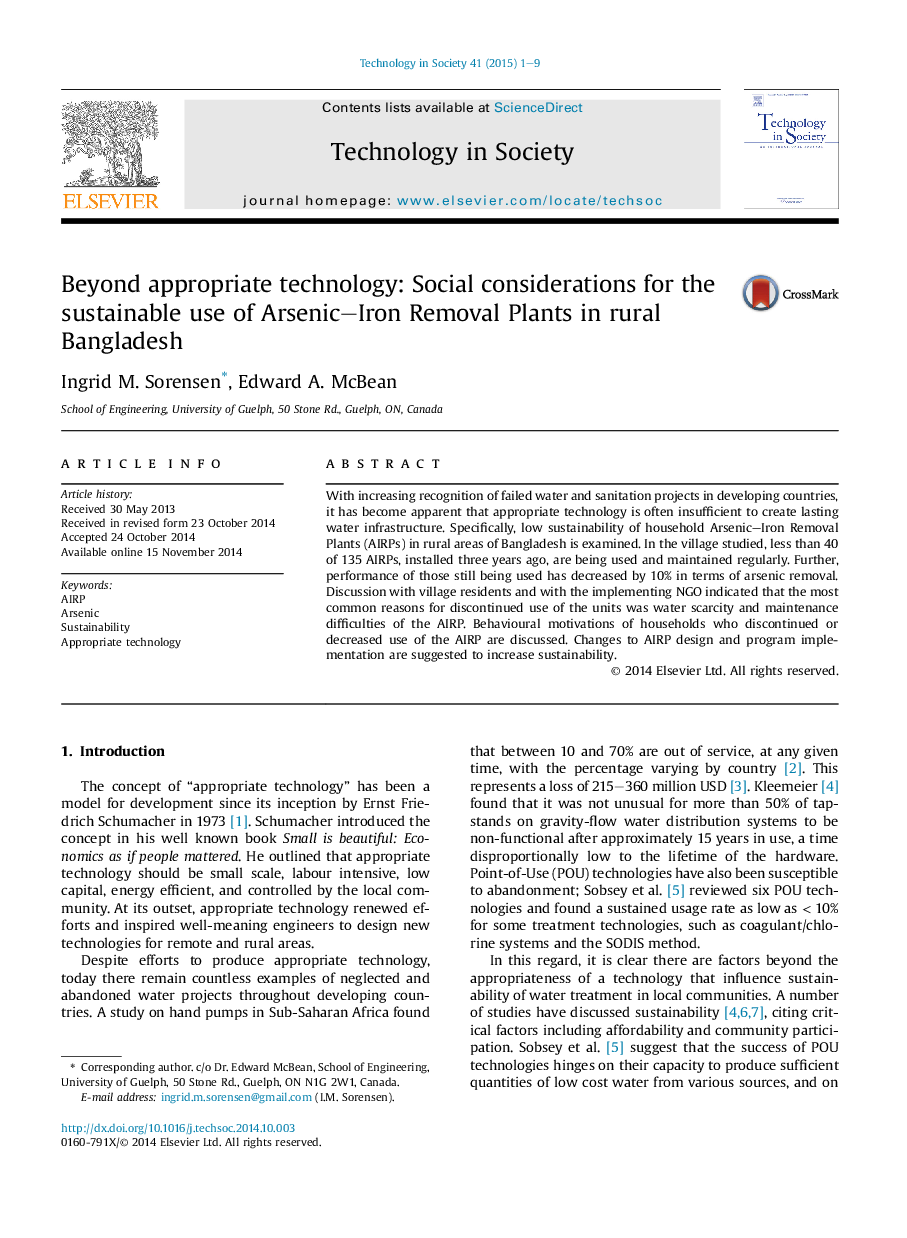| Article ID | Journal | Published Year | Pages | File Type |
|---|---|---|---|---|
| 375166 | Technology in Society | 2015 | 9 Pages |
•Sustainability of Arsenic–Iron Removal Plants (AIRPs) in Bangladesh is examined.•In the village studied, less than 30% of AIRPs are used three years after installation.•Arsenic removal efficiency of AIRPs still in use declined by 10% from installation.•Reasons given for discontinued use of AIRPs were maintenance and water scarcity.
With increasing recognition of failed water and sanitation projects in developing countries, it has become apparent that appropriate technology is often insufficient to create lasting water infrastructure. Specifically, low sustainability of household Arsenic–Iron Removal Plants (AIRPs) in rural areas of Bangladesh is examined. In the village studied, less than 40 of 135 AIRPs, installed three years ago, are being used and maintained regularly. Further, performance of those still being used has decreased by 10% in terms of arsenic removal. Discussion with village residents and with the implementing NGO indicated that the most common reasons for discontinued use of the units was water scarcity and maintenance difficulties of the AIRP. Behavioural motivations of households who discontinued or decreased use of the AIRP are discussed. Changes to AIRP design and program implementation are suggested to increase sustainability.
